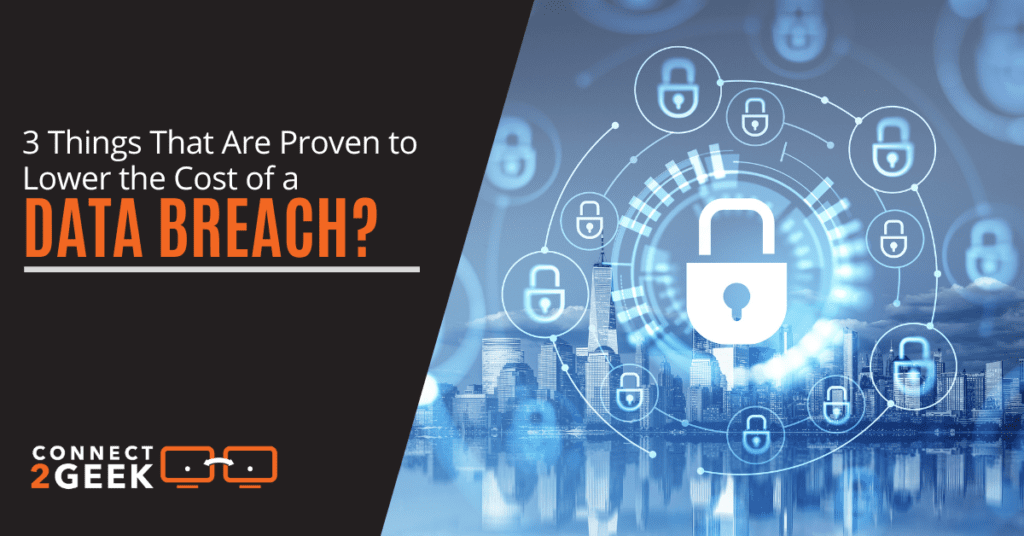
According to a 2022 report from IBM and Ponemon Institute (the 17th report of its kind since its inception), the cost of a data breach hit a record high of 4.35 million US dollars. This report is sourced from about 500 hack attacks in fifteen industries across seventeen countries, with data from over 3500 interviews.
Hackers are getting more malicious, attacks are getting more vicious, and businesses are bearing the cost of these attacks. The costs are rising yearly, and almost nothing businesses can do about it.
However, there are three main factors that have been proven to help lower the cost of a data breach. This article critically looks at these important factors and other related details. Read on to learn more.
What Kinds of Businesses Are Affected?
Data breaches affect different sizes of businesses in different ways. Whether you own a big, medium, or small business, a breach will surely affect your business. In fact, in recent studies, small businesses are three times more likely to be hacked and breached than big businesses.
This is because for a business to run, it needs data. This data is what threat actors are after – customer information, financial information such as credit card numbers, third-party data, IP addresses, and more. Hence, for businesses, it has now become a subject of “when” and not “if” they will get attacked. As long as a business has “valuable” information, it will always be a target.
Therefore, to prevent their business from being victims of a data breach or other types of cyber-attacks, they need to have effective security in place to lower the effects of data breaches.
3 Ways to Lower the Effects of Data Breaches
There are three proven ways businesses can reduce the effect of a data breach. The best ways to do this involve boosting the systems already present by either adding new components or replacing them with more effective ones. With a well-thought budget expense on acquiring specific tools, setups, and installations coupled with good decisions and policies, businesses can greatly mitigate the devastating effects of a hack attack. Below are some strategies that help prevent data breaches:
AI and automation
Deploying AI and automation programs in your business gives you a higher chance/probability of fending off hack threats and other malicious behavior. In fact, utilizing this option offers businesses the biggest chance for fewer expenses when it comes to catering to the effect of data breaches.
Organizations that employ AI and automation programs can identify and manage data breaches earlier and faster. According to a study, with AI and automation, businesses gained about 28 days in malware and data breach identification and consequently paid less to contain and repair the breach. These companies even paid 3.05 million dollars less than the average data breach cost!
What’s more, for users who cannot afford the complete AI and automation setup and decide to go for partial AI and automation, it still yields results, although this is reduced compared to businesses that opt for full AI and automation employment and deployment.
Hence, it’s no surprise that there is an increase in businesses opting for partial or complete AI mechanisms and automation setups. From 25% in 2021 to over 30% in 2022, it seems this is just the beginning. This setup is helping businesses track and reduce data breaches.
Incident Response
It’s no surprise that companies who prepare for a data breach spend less to contain them when they come than companies who do not prepare at all. They could probably learn a thing or two from the Boy Scouts, whose motto reads, “be prepared.”
To be more specific, companies who prepare for such attacks usually save more than 58% of the standard average data breach cost, which clocks in at about 2.66 million US dollars. This preparation is called incident response, and many companies prepare by having an incident response team and plan on standby.
To lessen the cost of a data breach, it is crucial to possess an effective and efficient IT strategy. This is because while it is costly to have one, they will be able to meet the demands of identifying problems and stopping the effects early to mitigate them. The longer it takes to stop the effects of a data breach, the more costly it takes to manage it.
Typically, an IR (incident response) plan comprises:
- An overview of the scope of goals and objectives
- Examples of scenarios and incidents
- Roles and responsibilities of team members
- The phases and procedure of the incident response plan
Of course, you can get templates for incident response plans and strategies online; however, these must be tailored to suit the business to boost effectiveness and ensure the right results will be obtained.
You can also hire IR experts and professionals to help develop a customized incident response plan for your business. This will probably involve a full assessment of your business’s cyber security profile and operations.
Zero-Trust Models
Businesses that employed a zero-trust cyber architecture saved over 1.5 million US dollars when attacked by hackers. This statistic, however, refers to companies that adopted full zero-trust security models. Companies that adopt or employ mid or early-stage zero-trust models will, at the most, save close to a million dollars.
Zero-trust is becoming popular among tech companies due to its practicality and effectiveness. Without a doubt, 2023 might bring mass adoption of this security model, even beyond the tech industry.
Looking for Professionals to Help You Boost Your Data Security Setup? Think Connect2Geek!
Preparing for a data breach is not easy, which is why at Connect2Geek, we have professionals ready to take this off your shoulders as a service. We will ensure all your demands are met and surpassed. Contact us to get started!
